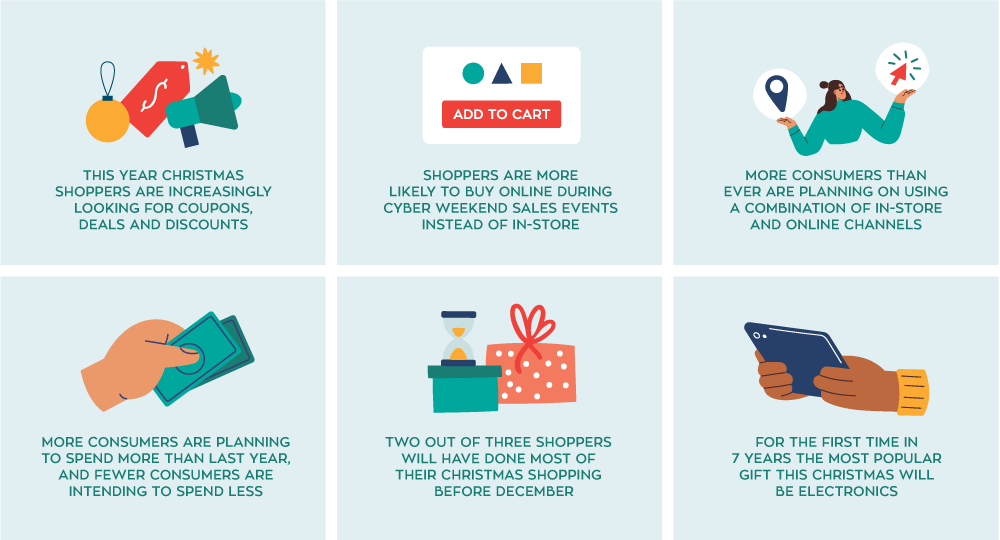As we approach the 2022 Christmas shopping season, questions around purchasing behaviour changes in a post-COVID world abound. What’s different this year? What are the enduring changes? What’s reverting back to pre-pandemic norms?
Findings from our 7th annual Christmas Shopping Intentions survey explore these questions and more. Our annual report: “Christmas Shopping Intentions – What to Expect in the Post-COVID Retail World” builds on data collected in our annual surveys since 2016. We compare the survey results to historical data and trends, where we explore the shopping behaviours, attitudes, and preferences of Australian consumers for the 2022 holiday season.
Additionally, we provide specific insights into how holiday shopping behaviour has changed relative to the pre-COVID era, and what Black Friday and Cyber Monday shopping trends are looking like for the upcoming holiday season.
2022 Holiday Shopping Season Outlook
The Christmas trading quarter is the most critical time of year on the retail calendar. 2022 is looking to be the first post-pandemic holiday shopping season, and Australian consumers want it all this Christmas — the tangible experiences of in-person shopping, and the convenience of digital channels, when buying gifts for loved ones.
However, with rising inflation and interest rates, price-sensitive consumers are a growing segment this Christmas, on the hunt for options that can meet their growing expectations around competitive pricing and convenience. Overlaying this state of play, the newer and increasingly popular shopping events – Black Friday and Cyber Monday – are helping to drive shoppers to increasingly do most of their Christmas shopping before the December month of festivities even begins.
Here is a snapshot of the report and findings:

- Post-covid holiday shopping changes: Australians will be increasingly looking for coupons, deals, discounts and buying from online marketplaces when shopping for Christmas presents.
- Black Friday & Cyber Monday: In 2022’s Cyber Weekend sales events, Aussies will be more likely to buy online instead of in physical stores, and be buying electronics. These late-November events feed into the most significant post-COVID holiday shopping behaviour change: shoppers are increasingly looking for deals & discounts.
- Omnichannel shopping is the new norm: When shopping for Christmas presents, more consumers than ever are planning on using a combination of in-store and online channels. Online is not replacing in-store when it comes to Christmas shopping though; rather, it’s a complementary channel.
- Physical store vs online drivers: The ability to see and touch a product is the overwhelming reason why shoppers prefer going to a physical store. In contrast to this, shoppers nominate a diverse range of reasons why they choose to shop online. COVID-19 is ap much less significant driver of online shopping compared with Christmas 2021.
- The most preferred formats for holiday shopping: Shoppers won’t be using a single retail format for 2022 Christmas shopping. Internet-based retailers maintain their status as the most popular retail format, and their popularity continues to rise. Department stores are the second most popular format.
- Christmas spending plans: This year marks the post-COVID era, with many consumer behaviours returning to pre-COVID norms. More consumers are planning to spend more than last year, and fewer consumers are intending to spend less.
- Australians are getting in early for their Christmas gifts: Two out of three consumers plan to do most of their Christmas shopping before December. November peaks as the most popular Christmas shopping month.
- Top Christmas gifts: For the first time in seven years running this survey, the most popular gift consumers plan on giving this Christmas is electronics, with gift cards falling to second place.
Download the report to discover insights and trends that will help drive and direct your strategy for a successful holiday shopping season.




